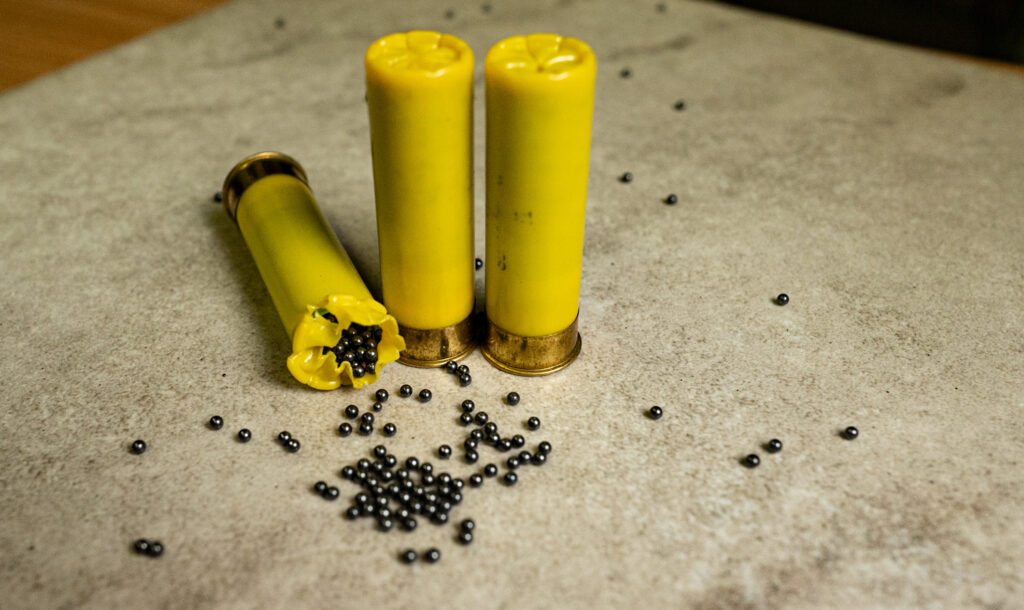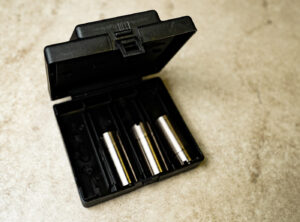Doves may look cute – and they may even symbolize peace – but they’re actually an enormous threat to the world.
How so? Well, one dove typically lays two eggs at a time, up to six times a year. That’s 12 new doves annually. If half of those doves each lays 12 eggs of their own, we’re now talking about 72 doves. And if half of those doves lay 12 eggs apiece, that’s 864 doves. (This math was checked by Harvard mathematicians and is 100 percent accurate.)
So you see the problem: Unless something is done about the dove situation, it won’t be very long at all before the entire planet is buried beneath a 100-foot thick blanket of crazed, ravenous doves. This is not the sort of future we wish to leave to our children, which is why we recommend that everyone know how to dove hunt!
Going dove hunting is as easy as traveling to a dove-filled area with a shotgun and a few boxes of shotshells. Succeeding at dove hunting is another story, as the sport takes incredible skill. You’re not going to master the art in one day, but if you follow our dove hunting tips you may just fill that bag limit!
How to Dove Hunt: The Basics
What Shot Should Dove Hunters Use?

Most dove loads are filled with #7.5 shot or #8. You can make good use of trap and sporting clays loads when you go dove hunting, but specialized dove loads generally offer slightly better performance for upland game. Do take care that dove loads can render trophies unrecognizable at very close range, and also that such small pellets lose a substantial amount of momentum at very long range. When you’re taking aim at distant doves, an upland game shell loaded with #4 or #5 shot will deliver superior downrange energy for a more reliable kill (albeit with a less dense pattern).
Use the correct shotgun as well. You’re obviously going to prefer what you’re most accustomed to firing, although a 410 Bore or 32 Gauge may prove a little too anemic to reliably anchor doves. Don’t be afraid to bring the 20 or even the 12 Gauge shells when you’re hunting such small animals.
What Choke Should Dove Hunters Use?

Many novice dove hunters make the mistake of using too restrictive a choke tube. A very tight pattern won’t just make it harder to ensnare fast-moving game in flight; it will also mutilate a delicate dove so badly that even stray cats would want nothing to do with it. An improved cylinder (imp cyl) or modified (mod) choke provides a wide enough pattern for the sport while still putting enough pellets on target to kill it fast and humanely.
A little preparation goes a long way. Before you commit to an ammo and choke pairing, test a few out at the range or in your backyard (if you’re blessed with a backyard you can fire shotguns in). This way you can see if your pattern possesses any glaring holes that a dove might be able to fly through. Dove hunting ammo isn’t all that expensive, so don’t hesitate to experiment!
Single Out Your Dove
When you encounter a flock of doves, your first reaction might be to unload on it willy-nilly. You are unlikely to hit a dove this way. Instead pick out a single target and aim only at it. Once you see your quarry begin to nosedive, select your next target.
Lead With Your Aim
If you’ve ever played Space Invaders, then you already know the importance of aiming where your target is going to be – not at its present location. You typically want to aim about six feet in front of your target in the direction it’s flying toward. This distance will change depending on the dove’s flight speed and your own ammo’s muzzle velocity, but doves are so numerous that you’ll probably get plenty of opportunities to refine your lead distance over the course of your hunt.
Use Decoys
Although not strictly necessary, decoys can make a dove hunt far more successful. Randomly place five or six plastic dove decoys in the ground so they’re not spaced very far apart from one another, and pair up four of them to mimic a more natural gathering. Decoys are especially effective along a fence line, beneath a power line, and even in the branches of a barren tree. If they’re legal in your state, motorized decoys with flapping or rotating wings can prove highly effective at drawing doves. As a dove descends to check out your decoys, swing your barrel upward to fire at it.
Assume the Correct Dove Hunting Position
Plant your feet flat on the ground with your weight evenly distributed before you take aim. You may want to level the ground beforehand if it’s unusually lumpy or uneven. Swing your shotgun up to aim from your ankles – leave the hip movements on the golf course where they belong. Don’t be afraid to plant your cheek very firmly on the stock. That last part will especially help you avoid shooting above your dove’s head. And don’t expect to develop this set of motions so quickly that you will master it during your hunt; practice at home beforehand with a snap cap!
A dove hunt can go on for a very long time, and you are at liberty to conduct yours from the sitting position. (A five gallon bucket works great, plus it doubles as a convenient way to transport your gear.) It is just as important to practice mounting your shotgun in the sitting position. See if your local trap range will let you put a seat down at their stations.
Scope Out Your Dove Hunting Grounds
A great hunter doesn’t just know their game – they know the land, too. Go and scope out the terrain (the day before your hunt, ideally) and note how the birds appear to be traversing it. The locations of food and water sources are critical intel, as are trees and other spots where doves might prefer to roost. Don’t forget to bring your binoculars.
How to Dove Hunt: Get Sneaky
A dove isn’t smart by human standards, but it certainly knows enough to be a dove. That includes identifying weird things that could potentially kill it – yourself included. Wearing bright colors is going to signal to the dove that you’re to be avoided. Instead wear camo or solid colors that blend in with your surroundings. Take cover in the brush or behind a tree and avoid sudden movements. Thus lulled into a false sense of security, the doves are going to get a lot closer to you.
Look For Dove Hot Spots
 Doves frequent the edges and corners formed in their habitat by water and manmade things including fences and ditches. It’s not foolproof, but if you’re hunting in a new place then edges and corners are a good place to start out.
Doves frequent the edges and corners formed in their habitat by water and manmade things including fences and ditches. It’s not foolproof, but if you’re hunting in a new place then edges and corners are a good place to start out.
A dove has a special muscular pouch in its throat called a crop which helps it break down the tough grains in its diet. Doves need to fill their crops with small pieces of gravel in order for them to work effectively. Lying in wait near a source of grit is a good way to get the drop on doves looking to fill up their crops.
Doves love grain fields for obvious reasons. If you can get permission to hunt at a farm that has just finished harvesting, then the doves are practically going to line up and take turns flying right past your nose.
Know Your Distances
Some people are geniuses when it comes to estimating distances. Others of us, not so much. You don’t want to waste your time and ammo firing at birds that are flying out of range, so measure the distance to a landmark like a rock or a shrub beforehand. Alternatively, you can place a marker that will give you immediate visual reference. Those cheap little stake flags used by utility companies and landscapers work great because they’ll also tell you what the wind is up to.
Got all that? Good, now you know a little bit about how to dove hunt! Just make sure you’re all set for 12 Gauge or 20 Gauge ammo before you setout. We don’t recommend trying to catch live doves with your teeth unless you’re named something like Felix or Smudge.






Leave A Comment